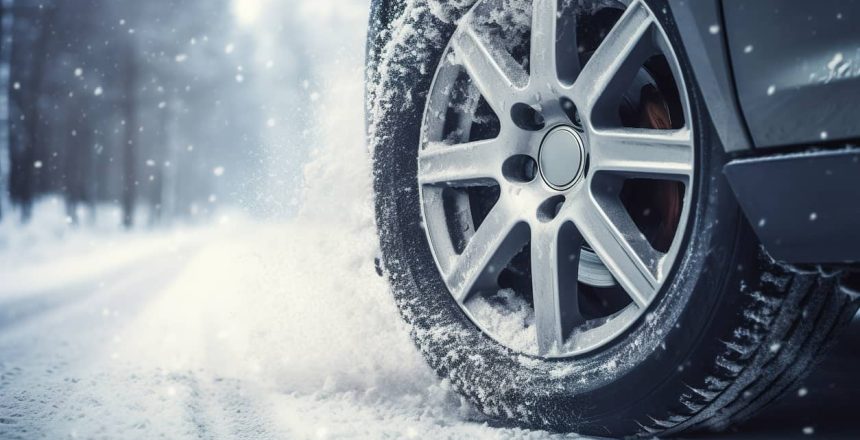Surviving Winter: Essential Tips for Your Vehicle Emergency Kit
This article provides tips and recommendations for creating a Winter Preparedness Vehicle Kit, including essential items such as blankets, gloves, and a sleeping bag, as well as advice on organizing a bug-out bag, maximizing storage space, and selecting the right ice fishing sled. It also covers the importance of water management, roadside assistance kits, fitness and training, medical kits, and prioritizing preparedness for winter emergencies.
Winter Preparedness Vehicle Kit Essentials
A Winter Preparedness Vehicle Kit ensures safety and preparedness during the challenging winter season. It should include crucial items such as a wool blanket, winter boots, insulated gloves, and a sleeping bag rated for negative temperatures. These items play a vital role in providing warmth, protection, and comfort during winter emergencies, such as getting stranded in cold and snowy conditions. For instance, a high-quality wool blanket made from natural fibers can offer exceptional warmth and insulation, even when wet. Look for blankets with a tight weave to prevent heat loss, and consider options that are easy to clean and maintain.
Similarly, winter boots with proper insulation and waterproofing are essential for keeping feet warm and dry, reducing the risk of frostbite and cold-related injuries. Insulated gloves with a waterproof and windproof exterior provide the necessary dexterity and protection for handling emergencies in winter conditions. When selecting these items, it’s important to prioritize quality and durability to ensure they effectively serve their purpose in challenging winter situations.
In addition to the essential items mentioned, incorporating other practical items such as hand warmers, a portable stove for heating food, and a compact snow shovel can further enhance the preparedness of the vehicle kit. Hand warmers provide on-the-go warmth and comfort, especially during long waits or exposure to extreme cold. A portable stove allows for preparing hot meals and beverages, which can be invaluable in sustaining energy and providing a morale boost during emergencies.
A compact snow shovel facilitates clearing snow around the vehicle, creating a safe and accessible space for addressing potential issues or waiting for assistance. By expanding the range of items in the Winter Preparedness Vehicle Kit, individuals can better tailor their preparedness to their specific needs and potential challenges during winter travel.
 Bug Out Bag Necessities
Bug Out Bag Necessities
A bug-out bag is a crucial component of winter preparedness as it serves as a comprehensive emergency kit for individuals facing unexpected or prolonged periods of being stranded in challenging winter conditions. This bag must contain a range of crucial components to support individuals in challenging conditions. Firstly, backpacks provide a convenient and portable way to carry essential items. When selecting a backpack, it’s important to choose one with durable, weather-resistant material and comfortable shoulder straps to facilitate ease of movement, especially in snowy or icy conditions.
Water and food are also paramount in a bug-out bag, as they are essential for sustaining energy and hydration during unexpected or prolonged periods of being stranded. Non-perishable, high-energy foods such as granola bars, canned goods, and nuts are ideal options, while water should be stored in a durable container to prevent freezing. Furthermore, first aid supplies, including bandages, antiseptics, and essential medications, are crucial for addressing injuries and illnesses that may occur during winter emergencies.
It’s important to periodically check and replenish the first aid supplies to ensure their effectiveness when needed. Lastly, navigation and signaling items, such as a compass, map, whistle, and signaling mirror, are indispensable for helping individuals find their way or attract attention if they are lost or need assistance in winter conditions.
In addition to the components mentioned, including items like a portable weather radio, extra batteries, and a compact emergency shelter, such as a lightweight tent or emergency bivvy, can further enhance the functionality of the bug-out bag. A portable weather radio provides access to real-time weather updates and emergency broadcasts, allowing individuals to stay informed and adapt their plans accordingly. Extra batteries ensure continuous operation of essential devices such as flashlights, radios, and communication equipment. A compact emergency shelter offers a secure and insulated space for individuals to seek refuge during prolonged or unexpected periods of being stranded in winter conditions. By incorporating these additional items, individuals can bolster the versatility and effectiveness of their bug-out bag for winter preparedness.
Maximizing Space: Creatively Storing Items
Maximizing space in your vehicle during winter is crucial for ensuring you have all the essential items needed for emergencies. One effective way to achieve this is by efficiently storing survival items in your winter boots. For example, you can place items like flares, gloves, and a winter in your boots, which not only optimizes space but also keeps these crucial items easily accessible in case of an emergency. This space-saving technique allows you to conserve valuable space within the vehicle for storing additional necessities such as food, water, and warm clothing, ensuring that you are well-prepared for any unexpected situation that may arise during the winter months.
Moreover, utilizing storage organizers, such as collapsible crates or compartmentalized storage bins, can further optimize the space within the vehicle and facilitate the efficient organization of essential items. These organizers can be strategically placed in the trunk or cargo area of the vehicle to secure and compartmentalize the various components of the winter preparedness kit, allowing for easy access and minimizing clutter. Additionally, utilizing storage solutions that can be attached to the interior walls of the vehicle, such as mesh pouches or hanging organizers, provides a convenient way to store smaller items and keep them within reach. By implementing these space-maximizing strategies, individuals can ensure that their vehicle is efficiently packed with all the essentials for winter preparedness while also maintaining ease of access to crucial signaling items in case of emergencies.
Utility of an Ice Fishing Sled
An ice fishing sled is considered a useful item for a Winter Preparedness Vehicle Kit due to its versatility and practicality in transporting gear in snowy and icy conditions. The sled’s sturdy construction and large capacity make it an excellent choice for carrying emergency supplies or equipment during winter weather. For instance, it can be used to transport a variety of items, such as a winter shelter, additional clothing, food supplies, or even a small generator for heat and power in an emergency situation.
When considering which type of ice fishing sled to include in a Winter Preparedness Vehicle Kit, it’s important to assess individual needs and the size of the vehicle. For example, a smaller compact car may benefit from a collapsible or smaller sled that can be easily stored in the trunk, while a larger vehicle, such as an SUV or truck, may accommodate a larger, more robust sled for carrying additional gear. Additionally, some ice fishing sleds come with features like built-in seats or compartments, providing added functionality for emergency situations.
Moreover, incorporating accessories for the ice fishing sled, such as tie-down straps, bungee cords, and a protective cover, can further enhance its utility for securing and transporting gear in winter conditions. These accessories provide additional security and organization for the items being transported, preventing shifting or displacement during transit. By customizing the ice fishing sled with appropriate accessories, individuals can optimize its functionality and ensure that it effectively meets their specific winter preparedness needs.
Water Management in Winter
When it comes to winter preparedness, ensuring access to clean water in a vehicle is crucial for staying hydrated and safe. One practical solution is to keep water in a single-wall stainless steel bottle, which is durable and can be used to boil water during winter. Stainless steel bottles are also advantageous because they can be easily cleaned and are less likely to retain odors or flavors from previous use, ensuring that the water remains fresh and potable. Remember that you do not want to melt snow to create drinking water, as snow will only turn into water at about 1/10th of the inches of snow. You want to melt ice, which is a 1/1 ratio.
In addition to storing water, it’s important to consider water purification methods suitable for winter conditions. For example, having water purification tablets or a portable water filter in the vehicle’s emergency kit can help in situations where access to clean water is limited. These measures are especially important during winter, as natural water sources may be frozen or contaminated due to adverse weather conditions. Remember that after you use a water filter, you should not allow it to freeze as it can damage the membranes. If you keep a filter such as the Sawyer mini, keep it in your front pocket so it will reduce the chance of it freezing. By incorporating these additional water management solutions, vehicle owners can ensure a safe and adequate water supply, even when facing challenging winter emergencies on the road.
Roadside Assistance Kit Essentials
A Winter Preparedness Vehicle Kit should include a roadside assistant kit, tire chains, and a basic tool set. These items are crucial for addressing roadside emergencies such as tire-related issues or minor vehicle repairs during winter conditions. For example, the roadside assistance kit may contain essential items such as a flashlight, reflective warning triangles, a multi-tool, and a first-aid kit, which are indispensable during winter emergencies.
Additionally, including items such as a portable air compressor, tire repair kit, and jumper cables further enhances the utility of the roadside assistance kit for addressing common winter-related vehicle issues. A portable air compressor allows for quick and convenient tire inflation, while a tire repair kit provides the necessary tools and materials to address minor tire punctures or damage.
Jumper cables are essential for jump-starting a vehicle with a dead battery, providing an immediate solution to this common winter-related issue. However, they now make fairly inexpensive stand-alone jump starters that do not require another vehicle to start your vehicle with jumper cables. These work excellent and are worth picking up. They are also very small and lightweight, but provide enough juice to start any vehicle.
When it comes to tire chains, selecting the right type and size for your vehicle is vital for ensuring optimal traction and stability on snow-covered or icy roads. Additionally, incorporating items such as traction mats, which provide grip and traction for vehicles stuck in snow or ice, and a foldable snow shovel further enhances the preparedness of the vehicle for addressing challenging winter road conditions. These additional items offer practical solutions for addressing common winter-related road emergencies, ensuring that individuals are well-equipped to navigate and stay safe during their winter journeys.
 Fitness and Training for Winter Preparedness
Fitness and Training for Winter Preparedness
When it comes to winter preparedness, staying physically fit and well-trained is essential for ensuring safety and survival during challenging conditions. Regular exercise and training help to maintain strength, endurance, and agility, which are all vital for navigating through winter emergencies. For example, activities such as snowshoeing, cross-country skiing, or winter hiking can help individuals build stamina and adapt to the demands of cold weather, snow, and ice. These activities not only improve physical fitness but also provide an opportunity to familiarize oneself with winter terrain and weather conditions, contributing to better preparedness in case of emergencies.
In addition to outdoor activities, maintaining a regular fitness routine indoors is also beneficial. Strength training, flexibility exercises, and cardiovascular workouts are important for overall physical readiness. For instance, strength training exercises help build muscle strength, which is particularly useful for tasks like shoveling snow, pushing a stuck vehicle, or carrying emergency supplies. Moreover, flexibility exercises can aid in preventing injuries during physical activities in cold weather, while cardiovascular workouts enhance endurance and cardiovascular health, which is crucial for withstanding the demands of winter conditions. Prioritizing fitness and training ensures that individuals are better equipped to handle the physical demands and challenges that may arise during winter emergencies.
Moreover, incorporating winter-specific training courses, such as cold weather survival training or winter driving safety courses, can provide individuals with valuable skills and knowledge for navigating through winter conditions. These courses offer practical insights into handling winter-related emergencies and challenges, equipping individuals with the necessary expertise and confidence to respond effectively to unexpected situations. By engaging in specialized winter training activities, individuals can further enhance their preparedness and resilience for facing the unique demands of winter travel and emergencies.
 Importance of a Medical Kit
Importance of a Medical Kit
A medical kit is an essential component of a Winter Preparedness Vehicle Kit, as it plays a crucial role in providing immediate assistance during accidents or incidents in winter conditions. When driving in challenging winter weather, the risk of accidents or injuries due to slippery roads or adverse weather conditions increases. In such scenarios, having a well-equipped medical kit in the vehicle can make a significant difference in addressing injuries or health-related issues effectively.
The medical kit should include a variety of items such as a tourniquet, bandages, antiseptics, essential medications, and other necessary medical supplies. For example, adhesive bandages, gauze pads, adhesive tape, antiseptic wipes, pain relievers, and any personal medications needed by the vehicle occupants. By having these items readily available in the medical kit, individuals can attend to minor injuries or health concerns promptly, ensuring that they receive the necessary care while waiting for professional medical assistance if required.
Regularly checking and organizing the medical kit is crucial to ensure its readiness for emergency situations, as expired or depleted supplies may hinder its effectiveness when needed the most. Therefore, maintaining and restocking the medical kit as needed is essential to guarantee its reliability during winter emergencies.
In addition to the items mentioned, including specialized medical equipment and supplies for addressing cold-related injuries and illnesses can further enhance the preparedness of the medical kit. Items such as instant cold packs, heat-reflective emergency blankets, and specialized hand and foot warmers are valuable additions for addressing hypothermia, frostbite, or cold-related discomfort. Moreover, incorporating a comprehensive medical reference guide or first-aid manual provides individuals with valuable guidance and instructions for administering first aid and addressing common medical issues in winter conditions. By expanding the range of medical supplies and resources in the kit, individuals can ensure that they are well-prepared to handle a variety of medical emergencies that may arise during winter travel.
Prioritizing Preparedness
Prioritizing preparedness for winter emergencies is essential for ensuring safety and confidence while navigating through challenging winter conditions. Proactive measures, such as staying updated on weather conditions and forecasts, play a crucial role in minimizing the impact of potential emergencies. By monitoring the National Weather Service’s updates on hazardous winter weather and forecasts, vehicle owners can make informed decisions about their travel plans and be better prepared for any adverse conditions they may encounter on the road.
Additionally, taking proactive measures, such as having a winter supply kit in the vehicle, can significantly enhance preparedness. This kit should include essential items such as a wool blanket, winter boots, insulated gloves, and a sleeping bag rated for negative temperatures. By having these supplies readily available, vehicle owners can be better equipped to handle unexpected challenges that may arise during winter travel. Furthermore, sharing travel plans and routes with someone before embarking on a journey, keeping the gas tank filled, and avoiding driving with the flu are additional proactive steps that contribute to overall preparedness and safety during the winter season.
Moreover, leveraging reliable resources and information sources for winter road conditions and emergency preparedness, such as the National Weather Service’s social media channels and official websites, provides individuals with valuable insights and updates for making informed decisions. By staying connected to authoritative sources of information, individuals can stay ahead of potential hazards and challenges, allowing them to adjust their plans and take proactive measures in response to changing conditions. Embracing a proactive and informed approach to winter preparedness empowers individuals to minimize risks, enhance safety, and confidently navigate through the seasonal challenges.
 Conclusion: Survival Winter Preparedness
Conclusion: Survival Winter Preparedness
In conclusion, a Winter Preparedness Vehicle Kit is vital for ensuring safety and preparedness during the challenging winter season. By incorporating essential items such as wool blankets, winter boots, insulated gloves, and a sleeping bag rated for negative temperatures, vehicle owners can be well-equipped to face unexpected winter emergencies. Additionally, selecting high-quality items for the kit ensures maximum effectiveness and durability, providing reliable support during adverse weather conditions.
Embracing winter preparedness through proactive measures is crucial for navigating through the season safely and confidently. Staying updated on weather conditions and forecasts, following the National Weather Service on social media, and having a winter supply kit in the car are proactive steps that can significantly enhance preparedness. By prioritizing preparedness, vehicle owners can minimize the impact of winter emergencies and ensure a proactive approach to safeguarding themselves and their passengers on the road. Taking the time to prepare and equip the vehicle with the necessary items can make a significant difference in staying safe and secure during winter journeys.



 Bug Out Bag Necessities
Bug Out Bag Necessities Fitness and Training for Winter Preparedness
Fitness and Training for Winter Preparedness Importance of a Medical Kit
Importance of a Medical Kit Conclusion: Survival Winter Preparedness
Conclusion: Survival Winter Preparedness
